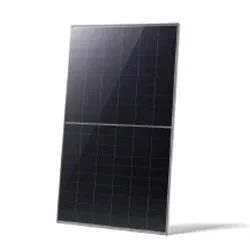30kW Three-Phase Hybrid Inverter for Enhanced Energy Efficiency and Performance Solutions
Understanding the 30kW 3-Phase Hybrid Inverter
As the demand for renewable energy sources continues to surge, innovative technologies are enabling both residential and commercial properties to harness solar energy more efficiently. Among these advancements, the 30kW 3-phase hybrid inverter stands out as a critical component for energy management in solar power systems. This inverter not only converts DC (direct current) electricity from solar panels into AC (alternating current) electricity for immediate use but also integrates battery storage solutions to enhance efficiency and reliability.
What is a Hybrid Inverter?
A hybrid inverter combines the functions of a traditional string inverter and a battery inverter. This configuration allows the system to manage multiple energy sources, including solar PV (photovoltaics), grid power, and stored energy from batteries. The ability to perform these functions makes hybrid inverters particularly versatile for both grid-tied and off-grid applications.
Key Features of the 30kW 3-Phase Hybrid Inverter
1. High Power Capacity The 30kW output capacity makes this inverter suitable for medium to large-scale applications, such as commercial buildings, agricultural operations, and industrial facilities. It can handle significant energy demands while providing optimal performance.
2. Three-Phase Output The 3-phase capability allows for a balanced distribution of power. This feature reduces electrical loss and improves the system's reliability, making it an ideal choice for commercial applications where large machinery and equipment may be in use.
3. Grid Interaction One of the standout features of a hybrid inverter is its ability to operate both with and without the grid. During peak generation times, excess energy can be fed back into the grid, often resulting in credits for the user. Conversely, during outages or low sunlight conditions, the inverter can draw power from its batteries or directly from the grid.
4. Battery Storage Integration The hybrid inverter facilitates seamless battery integration. This means that excess energy generated during the day can be stored for later use, providing autonomy and ensuring energy availability during periods of low sunlight or high demand. This is especially beneficial for businesses looking to maintain operations without interruption.
30kw 3 phase hybrid inverter

5. Smart Energy Management Many modern hybrid inverters come equipped with advanced monitoring and management systems. Users can track energy production, consumption patterns, and battery status through mobile apps or web interfaces. This data helps optimize energy usage and informs decisions on energy efficiency improvements.
Benefits of Using a 30kW 3-Phase Hybrid Inverter
- Cost Savings By utilizing solar energy, users can significantly reduce their electricity bills. The combination of energy usage during the day and battery storage for nighttime or emergency use maximizes savings.
- Sustainability Investing in a hybrid inverter aligns with efforts to reduce carbon footprints and promote the use of renewable energy sources. By transitioning to solar, businesses contribute to global sustainability goals and enhance their corporate social responsibility.
- Resilience The ability to operate independently of the grid adds a layer of resilience. In regions prone to power outages or fluctuations, having a reliable energy source can be a game-changer for operations.
- Future-Proofing As energy technologies abound, hybrid inverters are a future-proof choice. They can be easily adapted or upgraded to account for new technologies, such as more efficient batteries or energy management system integrations.
Conclusion
The 30kW 3-phase hybrid inverter represents a significant advancement in solar energy technology. It provides users with control over their energy production, consumption, and storage, thereby enhancing their efficiency and sustainability efforts. As businesses and homeowners alike seek to embrace more renewable energy solutions, the hybrid inverter exemplifies a practical and effective means to achieve energy independence and security. Investing in such technology not only promises financial benefits but also contributes to a more sustainable future.
-
String Solar Inverter: The High-Efficiency Solution for Smart Solar EnergyNewsJul.14,2025
-
Revolutionizing Rooftop Energy with the Power of the Micro Solar InverterNewsJul.14,2025
-
Power Independence with Smart Off Grid Solar Inverter SolutionsNewsJul.14,2025
-
On Grid Solar Inverter: Powering the Future with Smart Grid IntegrationNewsJul.14,2025
-
Monocrystalline Solar Panels: High-Efficiency Power for the Future of Clean EnergyNewsJul.14,2025
-
Bifacial Solar Panel: A Smarter Investment for Next-Generation Energy SystemsNewsJul.14,2025







